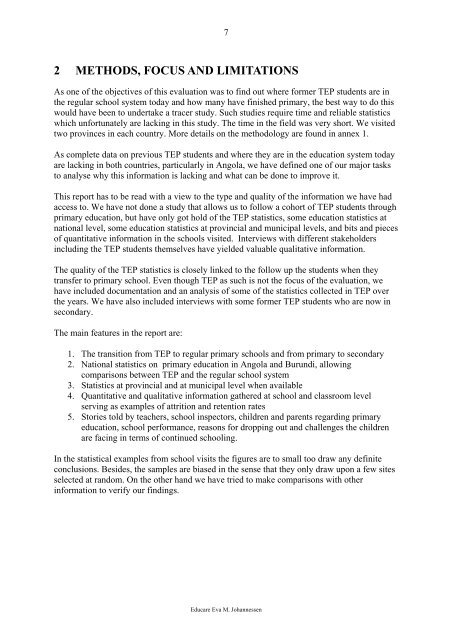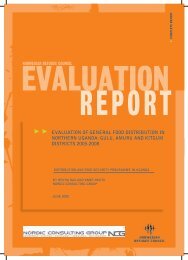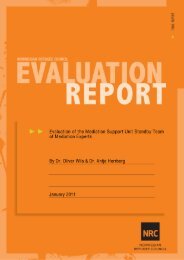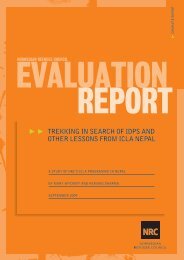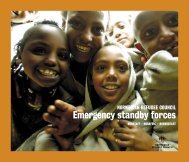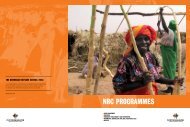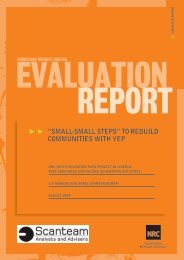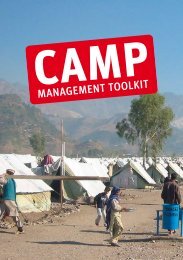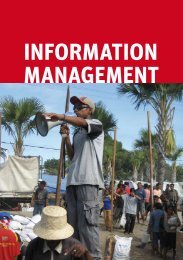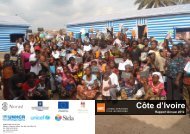ONE STEP CLOSER - BUT HOW FAR? - Norwegian Refugee Council
ONE STEP CLOSER - BUT HOW FAR? - Norwegian Refugee Council
ONE STEP CLOSER - BUT HOW FAR? - Norwegian Refugee Council
- No tags were found...
You also want an ePaper? Increase the reach of your titles
YUMPU automatically turns print PDFs into web optimized ePapers that Google loves.
72 METHODS, FOCUS AND LIMITATIONSAs one of the objectives of this evaluation was to find out where former TEP students are inthe regular school system today and how many have finished primary, the best way to do thiswould have been to undertake a tracer study. Such studies require time and reliable statisticswhich unfortunately are lacking in this study. The time in the field was very short. We visitedtwo provinces in each country. More details on the methodology are found in annex 1.As complete data on previous TEP students and where they are in the education system todayare lacking in both countries, particularly in Angola, we have defined one of our major tasksto analyse why this information is lacking and what can be done to improve it.This report has to be read with a view to the type and quality of the information we have hadaccess to. We have not done a study that allows us to follow a cohort of TEP students throughprimary education, but have only got hold of the TEP statistics, some education statistics atnational level, some education statistics at provincial and municipal levels, and bits and piecesof quantitative information in the schools visited. Interviews with different stakeholdersincluding the TEP students themselves have yielded valuable qualitative information.The quality of the TEP statistics is closely linked to the follow up the students when theytransfer to primary school. Even though TEP as such is not the focus of the evaluation, wehave included documentation and an analysis of some of the statistics collected in TEP overthe years. We have also included interviews with some former TEP students who are now insecondary.The main features in the report are:1. The transition from TEP to regular primary schools and from primary to secondary2. National statistics on primary education in Angola and Burundi, allowingcomparisons between TEP and the regular school system3. Statistics at provincial and at municipal level when available4. Quantitative and qualitative information gathered at school and classroom levelserving as examples of attrition and retention rates5. Stories told by teachers, school inspectors, children and parents regarding primaryeducation, school performance, reasons for dropping out and challenges the childrenare facing in terms of continued schooling.In the statistical examples from school visits the figures are to small too draw any definiteconclusions. Besides, the samples are biased in the sense that they only draw upon a few sitesselected at random. On the other hand we have tried to make comparisons with otherinformation to verify our findings.Educare Eva M. Johannessen


